I remember the first time I saw a Dark-eyed Junco. We’d just moved to Gabriola Island, seven years ago, and were still busy unpacking boxes when I stopped for a break, looked out the window, and noticed several black-hooded feathered creatures rummaging in the winter garden. I thought they must be some rare species of bird – since I’d never seen one before.
Now, of course, I know that the Dark-eyed Junco (junco hyemalis – sub-species Oregon) that is so prolific on Gabriola is also prolific all over North America. According to Cornell’s Project Feeder Watch, it is often one of the most-reported birds at feeders across the continent.
The junco is just one of at least nine species of sparrow (Family emberizidae) that live on or migrate through Gabriola. These birds are sometimes referred to, disparagingly, as ‘little brown jobs’ or “LBJs”. But once you get to know them, as species if not as individuals, you wonder how anyone could lump juncos in with, say, White-crowned Sparrows.
Next to juncos, the most common sparrow in our yard is the Spotted Towhee (pipilo maculatus).
With their red eyes and incessant squawk, they’re unmistakable! Right now a family of towhees is rummaging around the garden all day long. The juveniles, of course, look different from the adults. A good bird identification book can come in handy in the spring and summer because of all the baby birds around. I recommend the new Sibley’s Guide to Birds, Second Edition. Fantastic!
The Fox Sparrow (passerella iliaca) and Song Sparrow (melospiza melodia) are both brown streaky birds. The Fox Sparrow that frequents Gabriola is the “Sooty’ variety and has an almost-chocolate brown back and dark crown. Its breast is streaked with chevron-shaped spots that coalesce into one large brown spot in the centre of the chest. Unfortunately – for a new birder trying to distinguish between these two birds – the Song Sparrow also has a central dark spot on its breast. But in these parts the colouring is quite different, and there’s always the fail-safe ID giveaway: the Fox’s yellow mandible, or lower bill.
The Song Sparrow’s bill is all dark. You can also recognize a Song Sparrow by its flight pattern (it pumps its tail up and down as it flies) and its gorgeous distinctive song: it begins with 2 high notes, two slightly lower notes, then a complex musical trill. Very memorable.
The two crowned sparrows, the White-crowned (zonotrichia leucophrys) and Golden-crowned (zonotrichia atricapilla), are also abundant here some years. The White-crowned frequents the west coast in summer and during migration and is easy to identify by the black stripes on its white crown.
The Golden-crowned sparrow, abundant on the west coast during spring and fall migration, has a yellow stripe on its dark crown, and is quite tame and curious. Early west coast miners called it “Weary Willie” because its song sounded to them like “I’m so weary.” (Maybe they were weary?!) Others refer to the song as the “Oh dear me” song. But whatever you call it, it is made up of 3 descending mournful-sounding notes.
According to the ID books, Lincoln’s, Chipping, and Savannah sparrows can also be found on Gabriola at various times of the year. The only one of these species I ever see in our yard is the Chipping Sparrow who lives here in the summer, but winters, like many Gabriolans, in Mexico or the warm southern states. Not a bad idea!



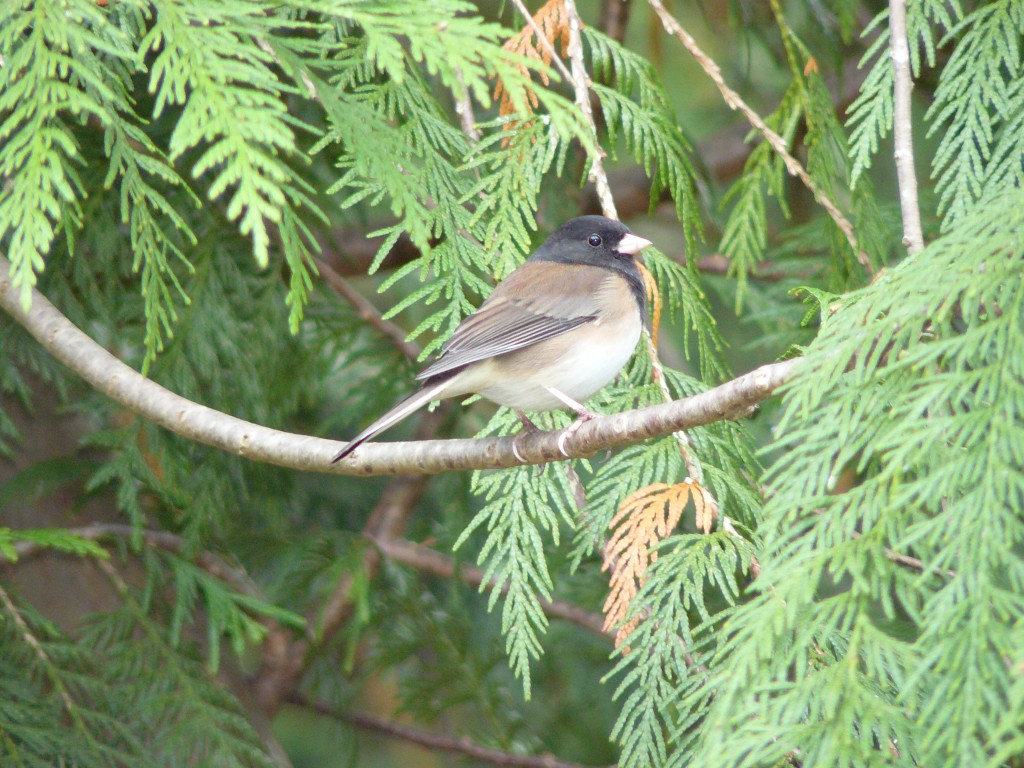

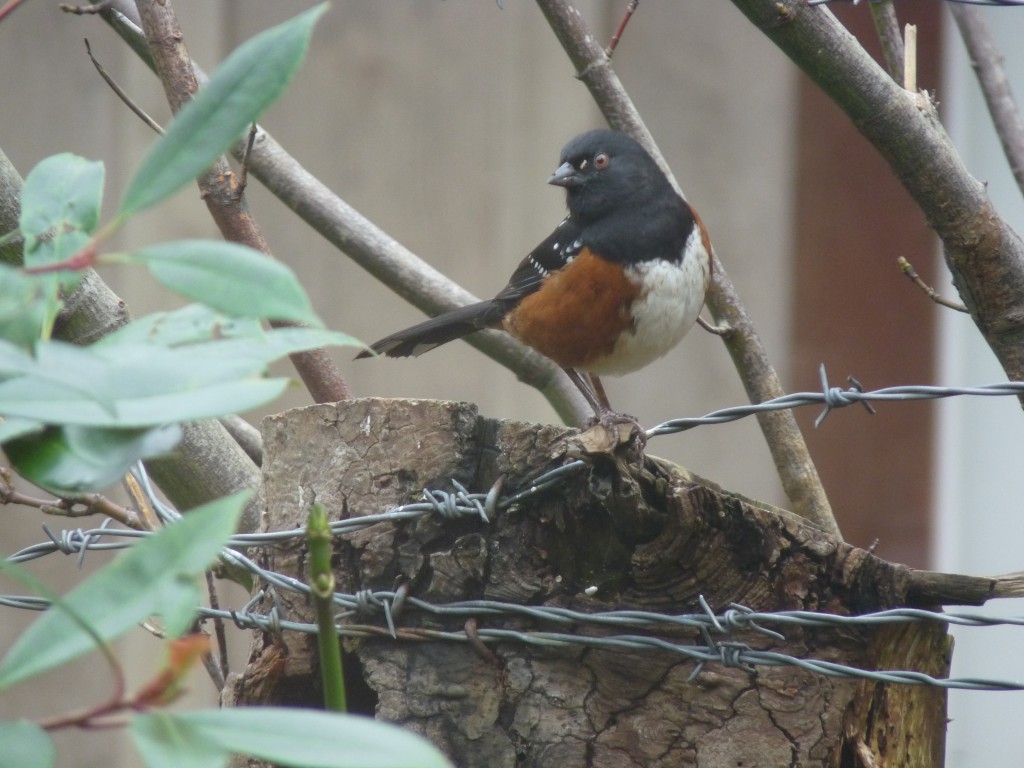
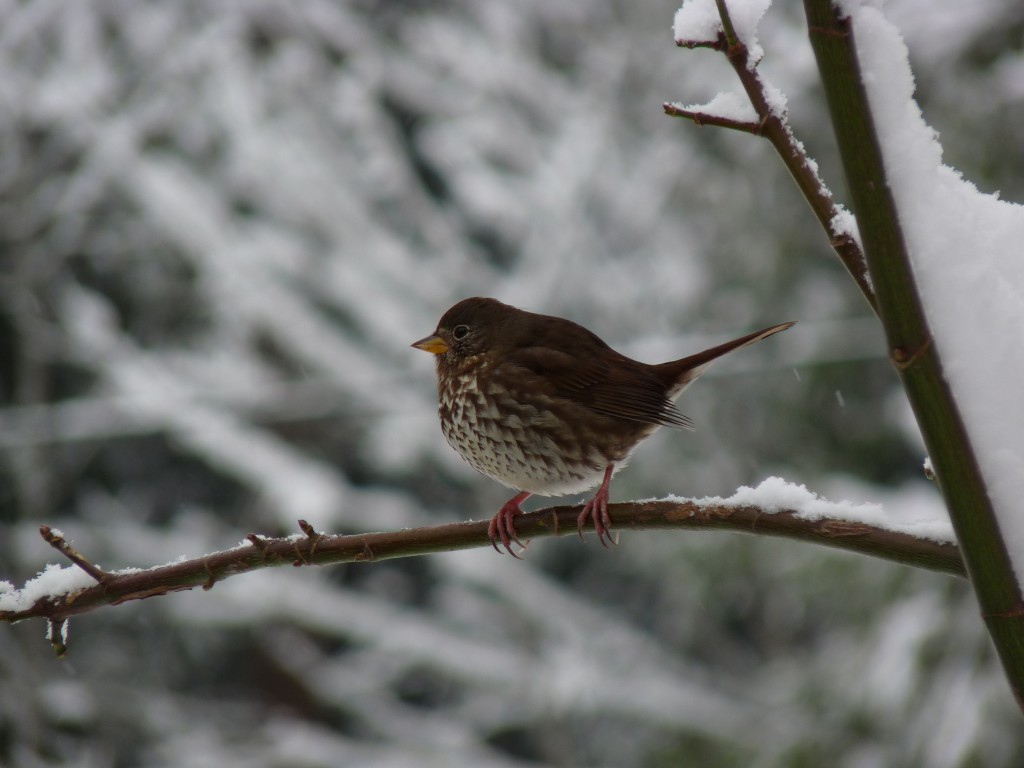
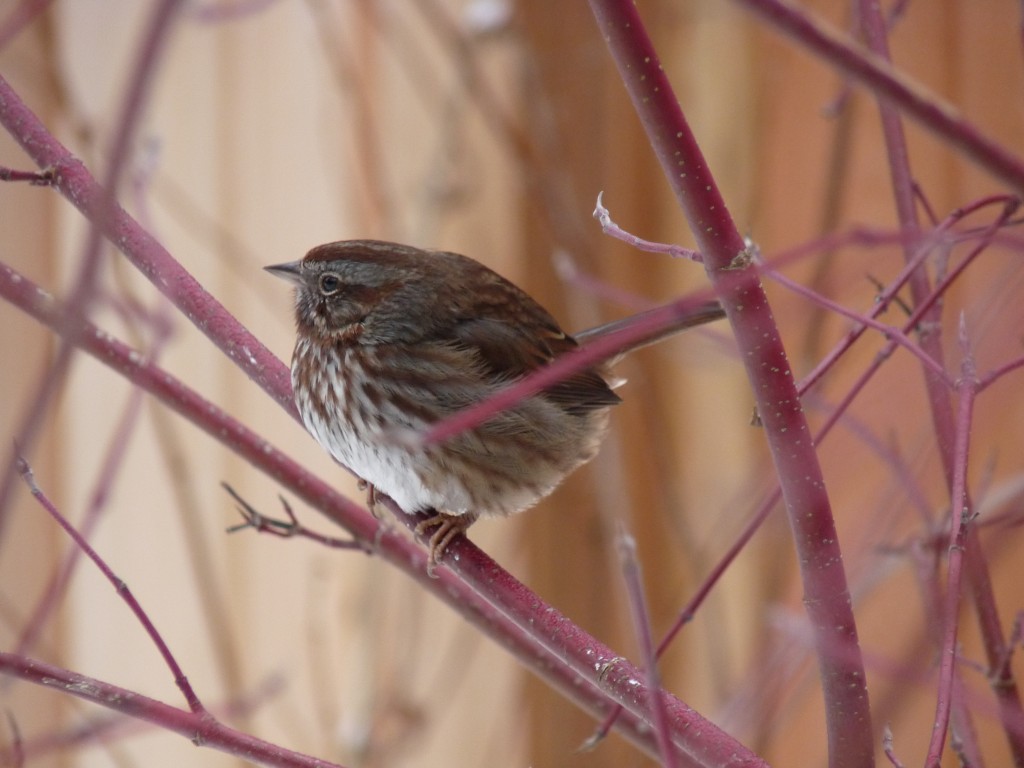
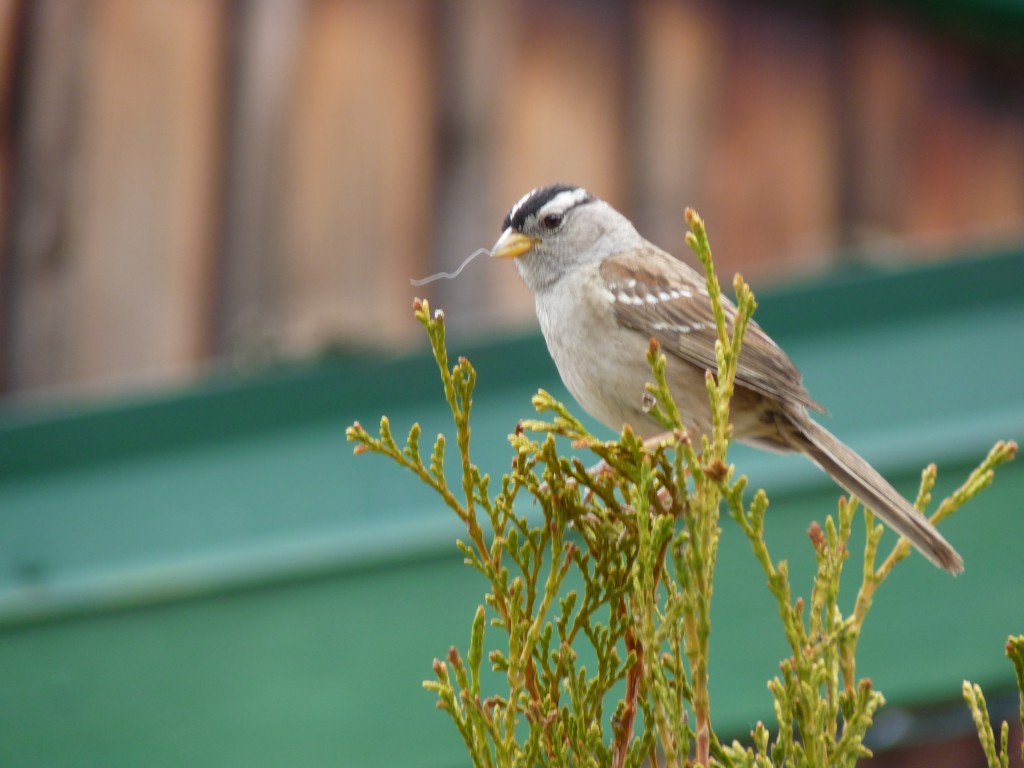
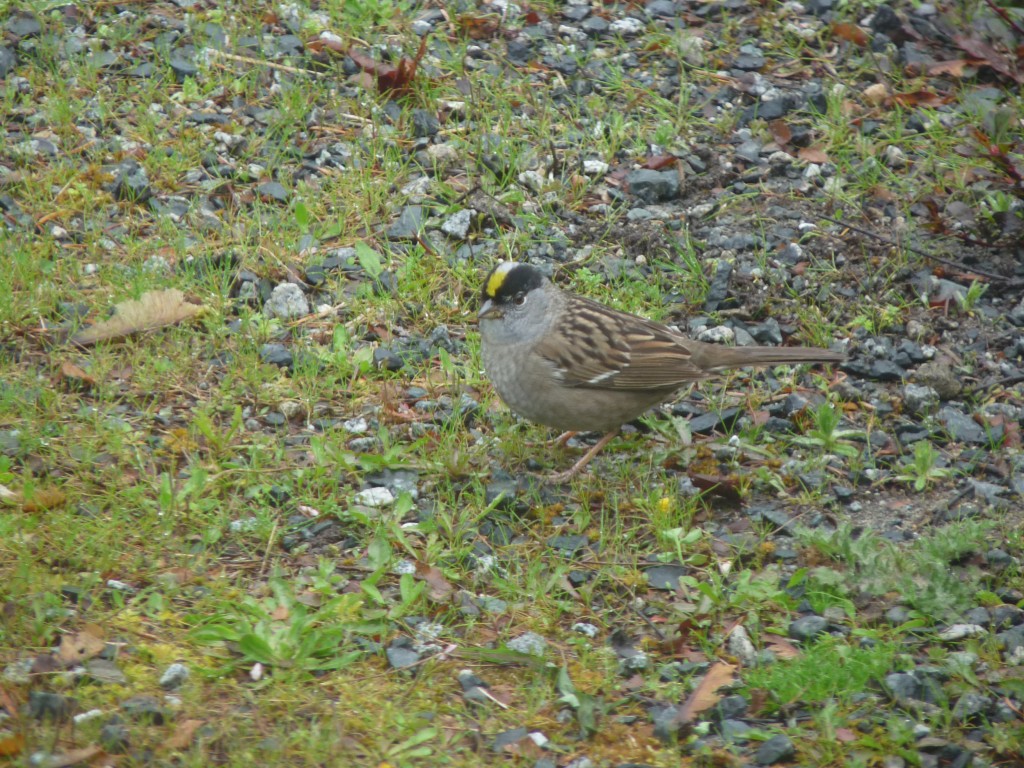
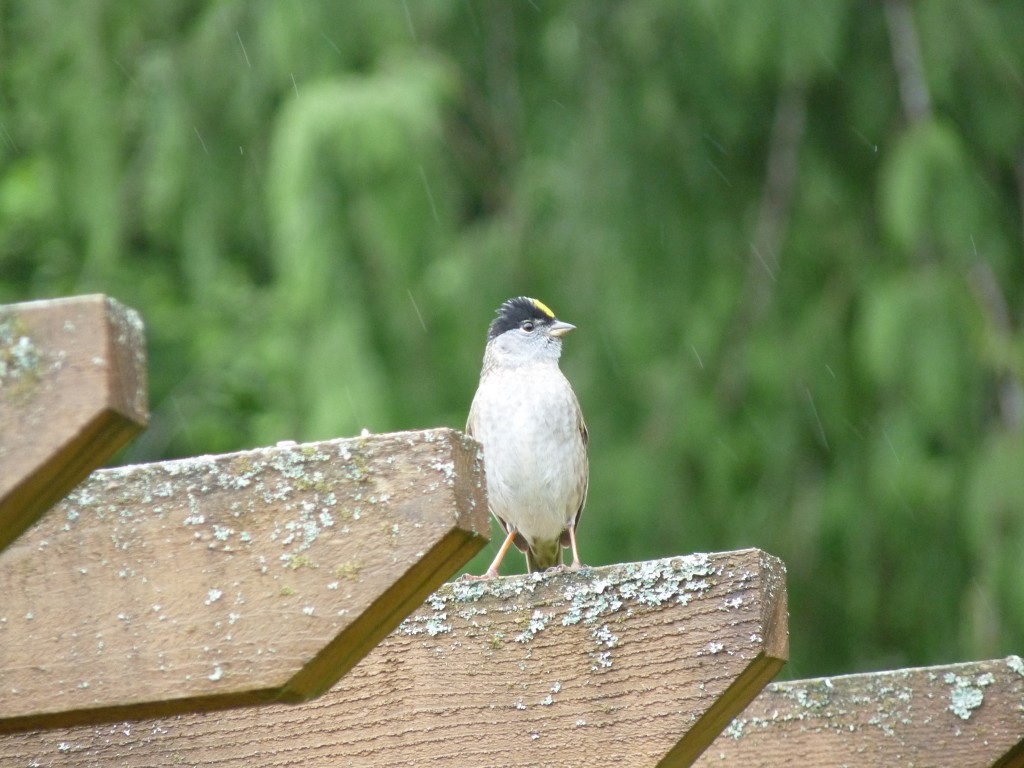
Pingback: This Week in Birding 74 by Charlotte Wasylik | Nemesis Bird
Pingback: Birding News #74 | Prairie Birder
Thanks Meg!
Beautiful!